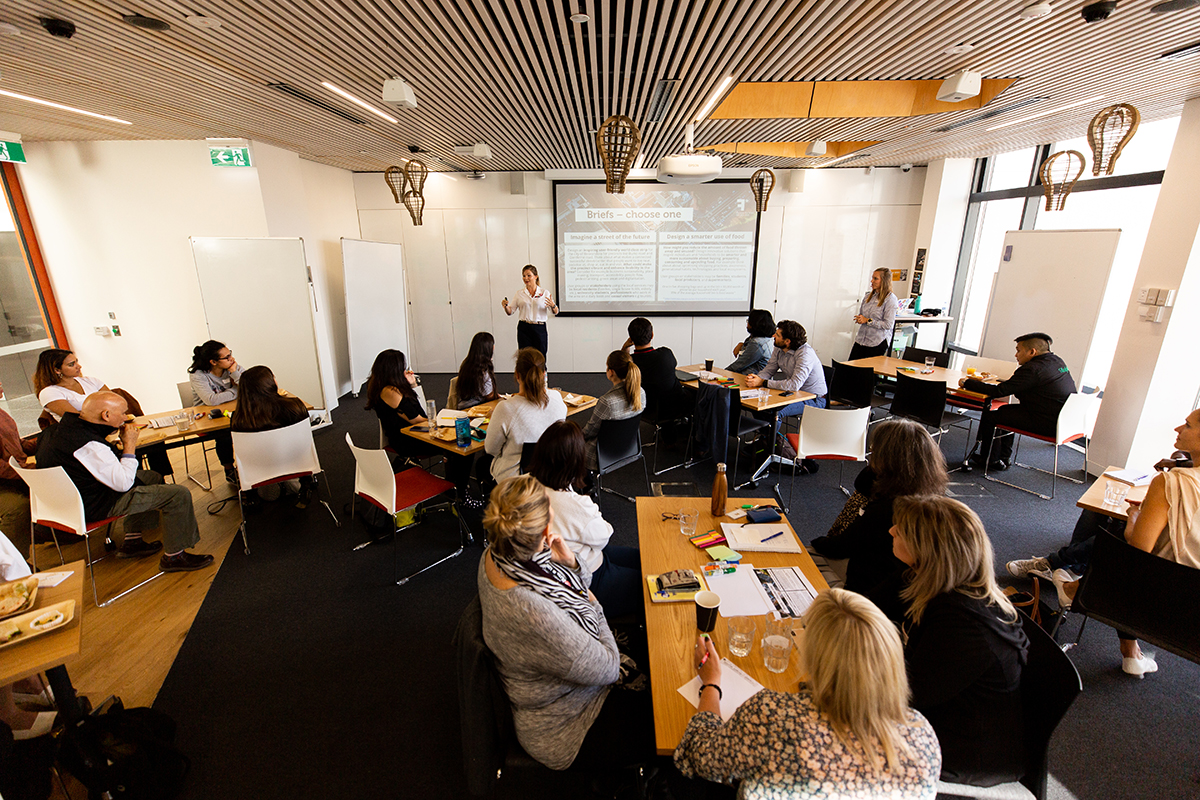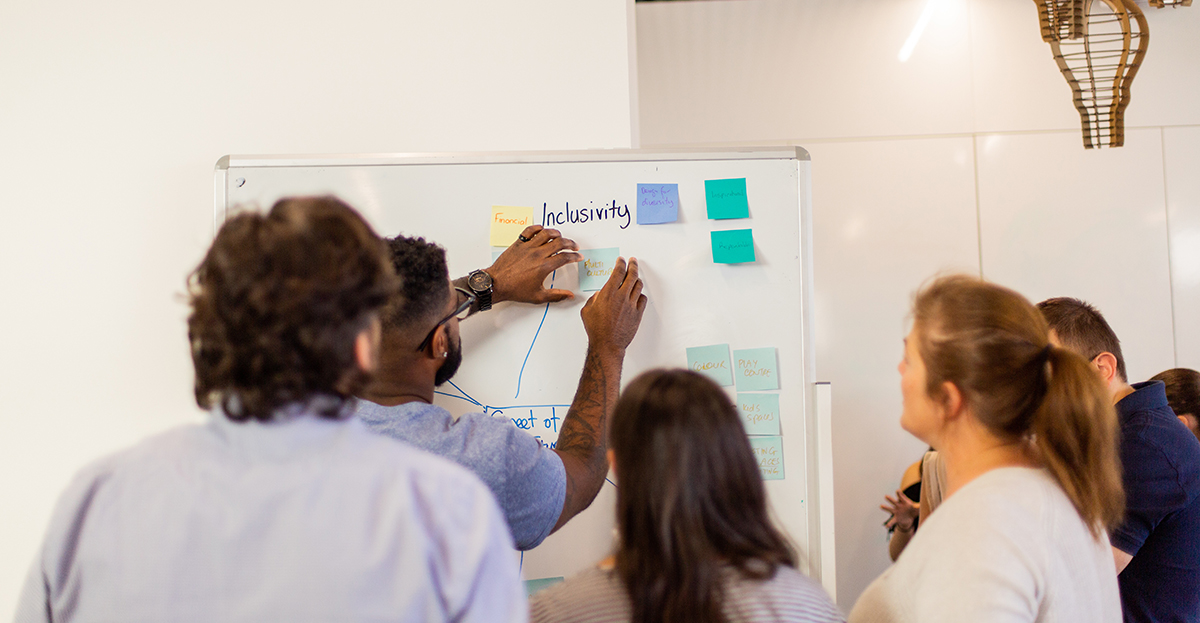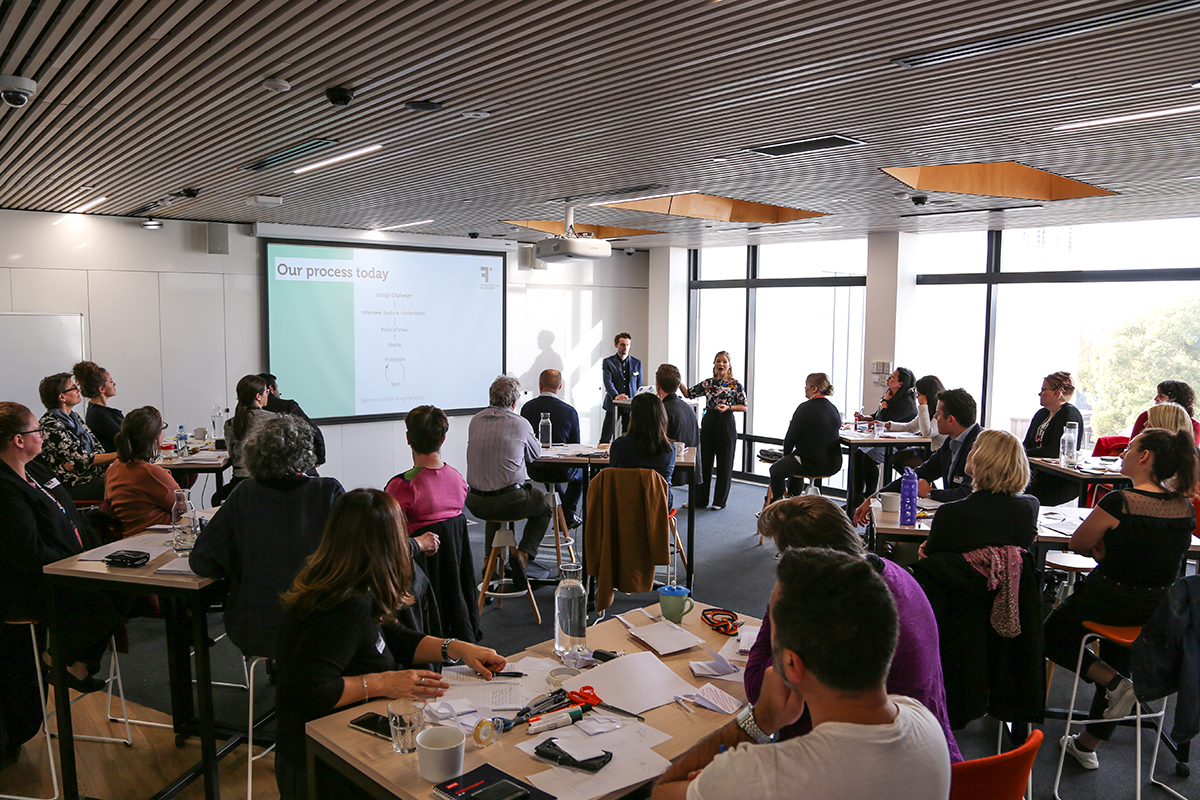Want to Learn Something New? Consider How to Make it Stick!

10 March 2021
“Live as if you were to die tomorrow. Learn as if you were to learn forever.” – Mahatma Gandhi
Learning is here to stay, but often it is not applied to its full potential
The future of work is rapidly changing with technological disruption, globalisation and increased uncertainty, and this new future calls for a continuous learning mindset. This human potential is the key competitive advantage and a source for resilience for organisations, and for example in Finland, life-wide learning has even been brought to the national agenda. Therefore, being adaptable and open to new experiences, input and information is essential in thriving in the future of work.
There are countless ways and opportunities to learn, from formal education and short online courses, to learning on the job through social interactions and new tasks. The professional development industry alone has become a globally significant market, with a global spend of over 370 billion USD in 2019. Thus, learning doesn’t stop after you reach a qualification or receive a degree. Instead, learning continues to be present along with the whole professional and life-wide journey.
Although we experience moments of learning continuously either informally or formally through professional training, we might not however always know how to transfer a new approach to practice, how to keep building our knowledge and how to have the confidence in trialling new methods. In fact, what we learn in professional training is rarely applied. These activities are often seen as a top-down approach and felt disconnected from the work context. It’s estimated that barely 15% of what is learned in a training setting is brought back to the job. In general, we have little understanding of the actual impact of professional training programs. Since the opportunities for learning seem to be abundant, we’d like to change the conversation to focus on the critical part, which is transferring those learnings to the daily context.

How might we transfer new capabilities into practice?
At DFM, we consult with organisations to boost their innovation capacity and help them create radical solutions to improve their business. Our aim is to create meaningful and long-lasting learning experiences for our participants, and we’ve seen the immediate impact of learning on people’s confidence, energy and mindset. We also have also witnessed the challenges of carrying this excitement and confidence out from ‘the classroom’ and into participants’ workplaces.
To learn more and solve this disconnect, we set out to investigate learning transfer and to come up with strategies to support the change in work practices. Through our initial research, we identified enablers and hindrances for transferring and integrating new skills and approaches to individuals’ and teams’ daily practice.
We found that for successful application of new skills and approaches, it is crucial to get others on board and to create a series of reminders for yourself – if your learnings go out of mind, they easily slip out of sight. Adopting a new practice is most effective when you do it collectively and you plan ahead the action of how and when you will use the things you have learned, one way or another.
What is a common story with a professional training experience?
Imagine you have just attended a full-day training in innovation and design thinking with your colleagues from different parts of your organisation. You feel the training unlocks something in you and realise you could just try things out, without the need to know all the answers upfront. You also realise how common it is to jump into solution mode without critically thinking about the problem space. You feel excited about the opportunities ahead and consider how you and your team might benefit from this training. The next day you go back to the office, exhausted yet enthusiastic to put your learnings into practice. In one of the meetings, you decide to share some of these learnings and suggest a new way of approaching a business challenge that has just come up in the meeting discussion. How do your team and your manager react? Are they curious to learn more or are they hesitant to try some of your suggestions?

Five things to consider in Learning Transfer
Through our interviews with participants who had gone through a design thinking training program, we heard several stories like this and also learned that there are different ways the story might continue, both successes and challenges.
We identified five factors that affected individuals’ ability to transfer their learnings to their daily work.
1. Common knowledge, shared experience and speaking the same language with the people you engage with makes change efforts and adopting new practices easier.
Being alone with new knowledge was perceived to be one of the biggest barriers for application in the day-to-day. To overcome this barrier, there are a number of strategies you can take. Having a receptive team and manager to new approaches makes a difference to the collective learning and the willingness/license to share. In addition, if possible pursue opportunities to learn something new as a team, as the shared experience makes it easier to continue using the approaches and language going forward. However, if you have been the only one in your team learning something new, think about how you could introduce the concepts to your team and the people you need to work with.
“I think that’s one of the important things if you’re talking about design thinking or innovation processes – if somebody has gone through it before it’s a lot easier to talk about it because you have that shared language, versus if you are trying to talk to somebody who hasn’t gone through the process you almost have to change your language so they understand, so you get the shared understanding.”
2. A tangible project and a space to put new skills into use strengthens the learning and increases the likelihood for adopting a new practice.
Unsurprisingly, application boosts further application and confidence. Having a clear project or initiative where you can put new methods, skills and practices into use help cement the learning. This could be a collective project or something you first experiment in your own workflow. Encouragement, recognition and positive feedback from peers or managers towards your new skills build confidence and encourage further adoption and application of the practice.
3. Keep learning top of mind and find ways to reinforce the key messages to ensure the new perspectives, methods and insights won’t get lost and buried in business demands.
It is easy to get lost in the busyness of the daily work and revert back to the work practice status quo. Finding ways to keep new skills top of one’s mind and present in daily work-life, increases the likelihood of application and connectedness to the new approaches. This can be achieved through different ways, such as reading about the topic, connecting with a community of people who practice the same approaches, or returning back to the materials you might have received after a training. Creating reminders and being continuously reminded of your training creates a reinforcing loop of revisiting what you learned to begin with and considering more opportunities for applying those learnings in your daily work.
4. A shift situation, context or environment can provide opportunities for application.
There are also situational factors that enable or hinder the application of learnings. Your new skills might come in handy in a situation when your whole team is facing a radical change in the ways of working and where the normal status quo is being disrupted. In times like these, a threshold for trying new approaches and ways of working might be lowered, as everyone is trying to navigate their way forward. On the other hand, the same situation might also be a hindering factor. You might feel stalled or unable to put your learnings into practice right away, if the strategic direction, business priorities or resources your team has are too misaligned.
In addition, our physical, social and mental environment plays a role in enabling or hindering our change efforts. A safe space and environment that allows sharing perspectives and doing experiments can unlock existing patterns and makes it easier to jump out of the comfort zone.
5. Knowledge is power and boosts confidence.
Finally, the simple act of learning something new, understanding a new theory, framework or concept is already an enabler for approaching your work in a new way. Gaining even a general understanding of a methodology such as design thinking can make you more confident and prepared to discuss it and join new conversations. Engaging in conversations is of course already a form of an application itself, and reinforces your learnings.
“Having that framework of ‘why’ and asking questions makes you feel confident – and enables you to ask people to try something rather than giving them a finished product. So it’s really about having that knowledge as you’ve gone through the process and you’ve seen that it works. It makes you feel confident and then you can put it into practice.”
All of these five factors can enable you to make your case for change. The impact you are looking to create is not always easy to communicate, and not getting the level of response and buy-in from your peers might hinder your license and opportunities in applying learning. Thinking about how you could show results that resonate with your audience and explain what is the expected change and benefit you are hoping to see can help you to get buy-in.

What does this mean for leaders and managers supporting their teams’ learning journeys?
If you are a manager wanting to empower your team to learn and also use that learning, there are a number of things you can do.
First of all, be interested and curious about what your employees learned. Ask what the impact of this new approach, tool or skill is, and create opportunities where they can share their learnings and insights. Give the license and set the expectation that they have the licence to suggest new ideas and approaches, and change practices if they see opportunities for improvement.
Fundamentally, appreciate and understand that the work only starts when the training has ended.
Learning is important, but the transfer is critical. Focus needs to be shifted to translating learnings into practice.
How can you be more prepared when engaging in upskilling and learning activities?
As a result of learning creative problem-solving and design thinking, we’ve witnessed the full potential of training as some of the participants we’ve taught have gone and created better products and services through critical thinking, made a full change in how they carry out their work to be more user-centric, and championed ways for their teams to collaborate and create collective knowledge that had not existed before.
Next time you engage in learning, shift your focus from the learning moment to what happens after. Think about the following factors well ahead so that you can make the most out of your learning efforts. Consider the environment and context of your work and be aware of the things that might enable or hinder you. If possible, plan for even a small situation where you can experiment and apply something you have learned. This could be something you do just for yourself or something you share with others. Find suitable ways to be reminded of and reinforce the learning, such as weekly reminders, designating 15 mins in the morning for reading, connecting with a community or peers with similar interests, or creating a small change when a new project starts. Try to involve your colleagues as much as possible. Share your learning material, talk about the content during your lunch break or introduce some of the insights in your weekly meeting.
Be mindful of some of the barriers or obstacles that might hinder you from tapping into the full potential of your learning, such as being alone with your new approach, getting overwhelmed by business priorities, not being able to gauge interest, not understanding the impact you can and want to create, or simply forgetting the practice and approach that got you so excited right after the experience.
The biggest obstacle might be within ourselves. We often create limitations in our own minds, thinking that our influence is very limited. We can, however, impact much more than we think and you can start by identifying the smallest step you can take to strengthen your learning.
You can also actively help your colleagues make the most out of their learning efforts. Next time you know a colleague has done a training, could you take a moment to ask a few questions about it? Show your curiosity and boost their confidence, and who knows, you might also learn a thing or two in return.
“When you go through the training, it kind of unlocks a little bit of your brain that holds you back from doing things. So you can try prototyping, or you can try something out and you don’t have a worry that you’re going to say the wrong thing, because you’re just experimenting. And having that confidence definitely enables you to have those conversations and encourage new practices and innovation within the team. However, if you’re coming up against people who haven’t done it, then it’s definitely harder to have those conversations or try those new methods because they might just look at you like you’re a little bit… a little bit nuts.”
Research Design
The insights of this article are derived from our overall experience in the past three years of running several professional training programs and sessions for over 2500 participants in industry and academia, and most recently from conducting interviews with participants of a 2-day creative problem-solving and design thinking training. The interviews were conducted after at least 12 months since their training experience. In the interviews, we asked the participants what learnings had stuck from the training, if they had approached their work differently after the training, what had enabled them to put learnings into practice and what might have hindered them in their endeavours.

